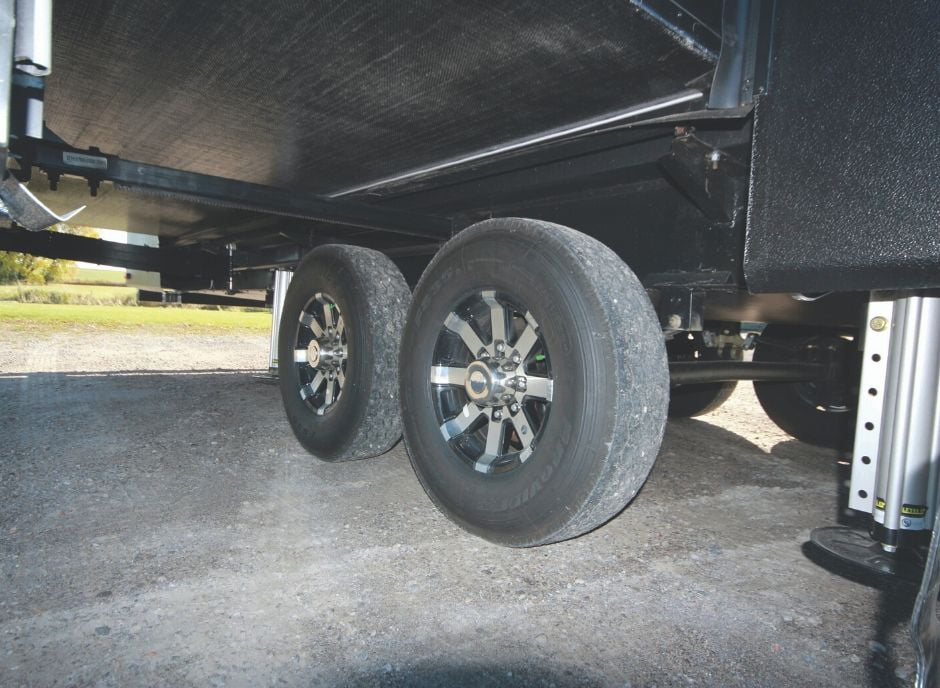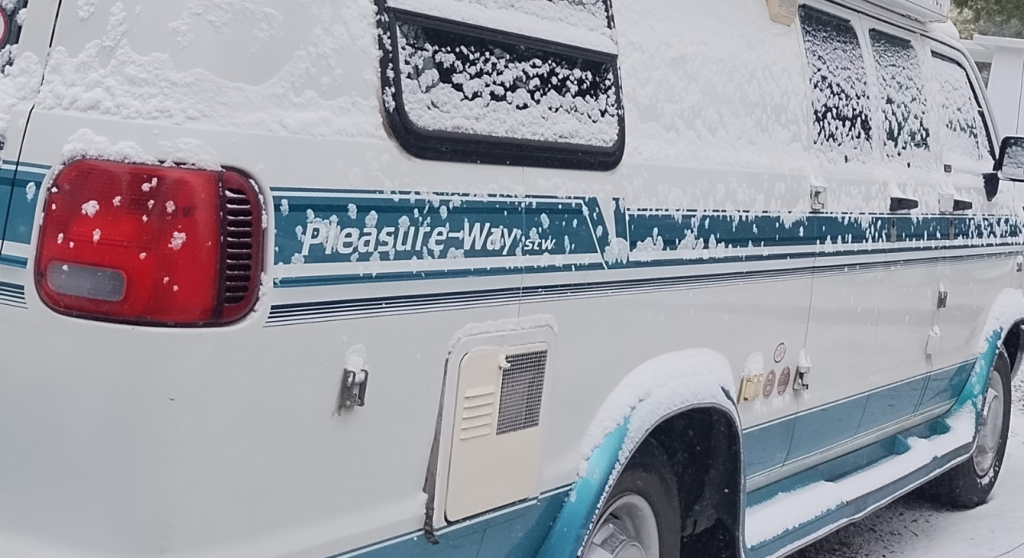Every RVer knows, in a general way, what a pre-trip inspection is – otherwise, known simply as the “circle check.” It’s a walk around your rig looking, touching and mentally evaluating the road worthiness of your tow vehicle and trailer (or motorhome) prior to hitting the road. So, let me ask you a crucial question: Do you do a circle check before starting a trip? Do you do it every time? If you are honest, you’ll probably answer no. The reality is that circle checks are much like your yearly physical with a doctor. You know you should do it religiously, but sometimes it just doesn’t happen – right? So, why is that? I can think of a couple of reasons, the first one being a sense of complacency.
Consider that RV builders and the automotive manufacturers are producing ever higher quality of vehicles, which includes overall reliability – that’s a fact. So, many of today’s owners, enjoying these well-built products, quickly stop doing circle checks because they trust their rig – and most of the time, their trust is rewarded. But not always. Breakdowns do occur, and statistics show that most are caused not by poor factory engineering but by lack of attention to simple, necessary maintenance items – things that may well have been caught early during a routine circle check.
Another reason for this failure to do pre trip checks is the smartphone age we live in. While you can check your tow vehicle and trailer lights on your phone, you still need to physically bend over and visually inspect all your tires. I fear that for some folks, if they can’t do it on their phones – well, they just don’t do it. Maybe the whole idea of walking all the way around the rig just seems out-of-date and old-fashioned. And, of course, we all claim that we are just too busy to spend the time – right?
However, I’d like to remind RVers that these checks are important. In fact, airlines flying the most sophisticated machines in the world today still rely on manual pre-trip checklists. Think of any movie you’ve ever seen where the pilots are in the cockpit going through their checklists, item by item; that actually happens. Furthermore, even in this computer-driven age, pilots still walk around their planes on the tarmac before each flight to visually inspect the aircraft. So, if the aviation industry still thinks these manual checks are important, shouldn’t RVers?
That ends my sermon for today. Now I’d like to offer a recap of the items to check – and a proven method for doing an effective circle check. First, there is lots to look over long before you hook up for your trip.
Tow Vehicle Inspection
Frankly, doing this several days before setting out on a trip is a smart move, as it gives you time to fix any problems rather than on the day of departure – which will now eat into precious vacation days.
Get under the hood and do all the fluid checks first:
- Engine oil
- Transmission fluid
- Radiator coolant
- Power steering fluid (unless it’s electric)
- Brake fluid
- Battery cell fluid (if not sealed)
- Next, visually inspect belts, hoses and electrical cables for wear, leaks, tightness and snug fit.
Tire Inspection:
This applies to the trailer and tow vehicle, or motorhome.
- Always check tire pressure cold – do it before your trip and at intervals during travel (when tires are cold).
- Check for uneven tread wear (this is often the first sign of a mechanical problem that causes the uneven wear).
- Look for cracks in the sidewalls and also inside the treads. (Remember, low kilometres on tires does not prevent them from aging. Rubber dries out over time and fails.)
- Hand check lugs for tightness and look for unexplained wear marks around the studs (this is an early warning of potential failure) each time you check air pressure.
Lights and Control Systems:
This is an integral part of a pre-trip circle check – but it can be done beforehand; create your own regular routine. Check all the following, either by circling your rig or with a partner’s help.

- Turn signals
- Brake lights
- Headlights (low and high beams)
- Backup lights
- Clearance lights
- Start the engine and check that all gauges are operating.
- Check windshield wipers – also assess wear of blades.
- Try the horn (don’t laugh, it’s required by the Highway Traffic Act).
- Check that camera lenses around the truck (if equipped) are clean and operating properly. (TIP: I carry a rag as I do my circle check, wiping lenses, mirrors and lights as I go. Visibility matters.)
- If the motorhome is equipped with air brakes, pump the pedal until the warning air pressure buzzer sounds and then check to see that the pressure comes back to normal quickly.
In the Trailer or Motorhome: On-Board Systems Check
While a circle check takes place outside the hooked-up combination, the on-board systems check may be just as important. Allow me to state the obvious: Arriving at the campground and discovering you’re out of propane is going to create all kinds of havoc – not the least of which is the round-robin blame game that will ensue with your family all pointing at each other. So, the time to do this is prior to departure – again, not on the day of – giving yourself time to run up to the propane store.
- Check the on-board gauge panel – most RVs have very good ones. This is where to start; look at the tanks, levels, DC power and propane – then run everything just to be sure it all works.
- Don’t forget the fresh water. Fill up at least partially before you leave; hookups can be tough to find on the road.
- Check the water system taps, lines, connections and valves. Run the demand pump and watch for (and listen for) leaks or open taps.
- Dump system and valves – have you got the hose? Do the valves open and close properly? Is anything leaking?
- House battery – check connections and look for corrosion; check fluid if possible; make sure it’s securely fastened and properly covered.
- Interior lights – try them all on DC; if you can connect to AC shore power, run everything else.
- Generator – if you’ve got one, run it and see if everything comes on.
- Appliances and HVAC – fire them up and make sure the heating and cooling are operable.
- LP gas system – check the propane fittings for tightness, then light each of the appliances and observe. Always follow your nose when checking the propane system; if there is a problem, you’ll smell it.
TIP: I do my on-board checks in the same order each time. This creates a habit in which I’m less likely to overlook something.
The Pre-Trip Circle Check:
We’ve now arrived at the point where it’s time to do the circle check. Your rig is hooked up and you’re about to hit the road. At this point, you’ll understand that if you’ve performed all the checks that I described, the circle check is nothing more than a last-minute failsafe procedure. And, that’s what it should be.
Starting at the driver’s door:
- With the vehicle running, turn on all the lights and activate the four-way flashers.
- Walking counter-clockwise, observe and touch tires, nuts and lights.
- Pay special attention to the trailer connection: Is the coupler secure? Are the pins in place; safety chains attached (not dragging); light connection secure and free to move? If using an equalizing hitch, inspect each of the components.
- If it’s a fifth wheel connection, visually inspect that the jaws are closed, and is the safety pin in place? Is the break-away line attached? Examine the overall condition and look of the hitch components.
- Moving down the trailer, observe the condition of body, windows, vents, tires and lights. Remember to look up – trailers are tall – and watch for open vents and antennas left up.
- Rounding the rear of the unit, note the four-way lights flashing.
- Proceed up the other side of the trailer, repeating each step as described. Check all storage and access doors – are they locked?
- When looking at the connection again, look to see that the attitude of the combination is level.
- Walking around the front of the tow vehicle, make sure you closed the hood.
- Back in your tow vehicle, adjust your mirrors once more and then test your trailer brakes for the proper gain setting by using the hand control while rolling at an idle.
I know most RVers are very careful and diligent about the maintenance of their vehicles, and frankly, I doubt anyone will read my lists and find something they didn’t know about. Instead, what I hope all readers will take away from these reminders is that the checks must be made regularly. And there is a real reward; if they are done in a consistent manner, you will reduce your costly on-road frustrations. I’ve written a checklist for myself that addresses the specific systems of my personal truck and trailer; I have it on a clipboard, and I follow it each time. If this system works for pilots and astronauts, I’m in good company.
Just remember, you can and want to solve maintenance problems long before you hit the road, so these checks will help you do that. By doing these checks regularly and the same way each time, you’ll create a good habit that will give you an earned sense of security every time you operate your rig. Now, head out for your next great RVing adventure!




